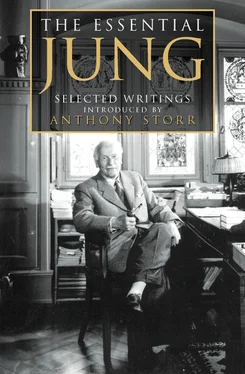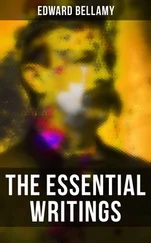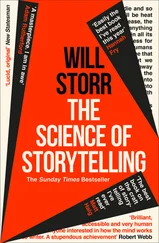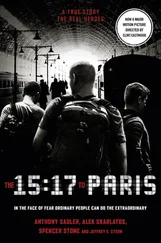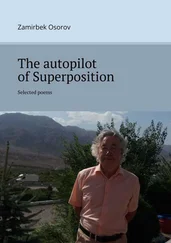I hope that this brief introduction to Jung’s thought will make it easier for the reader to find his way through the extracts which follow. Some may find Jung’s later writings difficult or antipathetic; but Jung’s valuable contributions to psychotherapy and to the understanding of individuals can be appreciated without subscribing to the whole of his system of belief.
Part 1 . Jung’s Early Work
Jung began his career in psychiatry in December 1900, when he was appointed as an assistant physician at the Burghölzli mental hospital in Zurich. Breuer and Freud had published their Studies on Hysteria in 1895; and Freud’s The Interpretation of Dreams had appeared in November 1899. But psychiatrists were still fascinated by the researches of Janet and Morton Prince into cases of “multiple personality,” and it was this phenomenon which inspired Jung’s first published work: his dissertation for his medical degree, “On the Psychology and Pathology of So-called Occult Phenomena.” This was based on his observations during seances of a 15½-year-old cousin, Hélène Preiswerk (called S. W. in the paper), who was reputedly a medium. She claimed to be controlled by a variety of spirits, varying from her grandfather, who was deeply serious, to a figure called Ulrich von Gerbenstein, who was flirtatious and frivolous. Jung interpreted these various figures as “unconscious personalities.”
From “On the Psychology and Pathology of So-called Occult Phenomena”CW 1, par. 77
In our account of S. W.’s case, the following condition was indicated by the term “semi-somnambulism”: For some time before and after the actual somnambulistic attack the patient found herself in a state whose most salient feature can best be described as “preoccupation”. She lent only half an ear to the conversation around her, answered absent-mindedly, frequently lost herself in all manner of hallucinations; her face was solemn, her look ecstatic, visionary, ardent. Closer observation revealed a far-reaching alteration of her entire character. She was now grave, dignified; when she spoke, the theme was always an extremely serious one. In this state she could talk so seriously, so forcefully and convincingly, that one almost had to ask oneself: Is this really a girl of 15½? One had the impression that a mature woman was being acted with considerable dramatic talent.
Jung goes on to compare S. W. with a case of Janet’s.
CW 1, pars. 92–3
Janet conducted the following conversation with the subconscious of Lucie, who, meanwhile, was engaged in conversation with another observer:
[Janet asks:] Do you hear me? [Lucie answers, in automatic writing:] No.
But one has to hear in order to answer. – Absolutely.
Then how do you do it?-I don’t know.
There must be someone who hears me. – Yes.
Who is it? – Somebody besides Lucie.
All right. Somebody else. Shall we give the other person a name? – No.
Yes, it will be more convenient. – All right. Adrienne.
Well, Adrienne, do you hear me? – Yes.
One can see from these extracts how the unconscious personality builds itself up: it owes its existence simply to suggestive questions which strike an answering chord in the medium’s own disposition. This disposition can be explained by the disaggregation of psychic complexes, and the feeling of strangeness evoked by these automatisms assists the process as soon as conscious attention is directed to the automatic act. Binet remarks on this experiment of Janet’s: “Nevertheless it should be carefully noted that if the personality of ‘Adrienne’ could be created, it was because the suggestion encountered a psychological possibility; in other words, disaggregated phenomena were existing there apart from the normal consciousness of the subject.” * The individualization of the subconscious is always a great step forward and has enormous suggestive influence on further development of the automatisms. The formation of unconscious personalities in our case must also be regarded in this light.
Returning to his own case, Jung discusses the “Origin of the Unconscious Personalities.”
CW 1, pars. 132–3
As we have seen, the various personalities are grouped round two types, the grandfather and Ulrich von Gerbenstein. The grandfather produces nothing but sanctimonious twaddle and edifying moral precepts. Ulrich von Gerbenstein is simply a silly schoolgirl, with nothing masculine about him except his name. We must here add, from the anamnesis, that the patient was confirmed at the age of fifteen by a very pietistic clergyman, and that even at home she had to listen to moral sermons. The grandfather represents this side of her past, Gerbenstein the other half; hence the curious contrast. So here we have, personified, the chief characters of the past: here the compulsorily educated bigot, there the boisterousness of a lively girl of fifteen who often goes too far. The patient herself is a peculiar mixture of both; sometimes timid, shy, excessively reserved, at other times boisterous to the point of indecency. She is often painfully conscious of these contrasts. This gives us the key to the origin of the two subconscious personalities. The patient is obviously seeking a middle way between two extremes; she endeavours to repress them and strives for a more ideal state. These strivings lead to the adolescent dream of the ideal Ivenes, beside whom the unrefined aspects of her character fade into the background. They are not lost; but as repressed thoughts, analogous to the idea of Ivenes, they begin to lead an independent existence as autonomous personalities.
This behaviour calls to mind Freud’s dream investigations, which disclose the independent growth of repressed thoughts.
The idea that personality was not a unity, but might contain subsidiary personalities was familiar to Jung from his own experience, since he records his surprise, at the age of twelve, at finding that he himself was two different persons.
From “SchoolYears” MDR, pp. 44–6/33–4
Around this time I was invited to spend the holidays with friends of the family who had a house on Lake Lucerne. To my delight the house was situated right on the lake, and there was a boat-house and a rowing boat. My host allowed his son and me to use the boat, although we were sternly warned not to be reckless. Unfortunately I also knew how to steer a Waidling (a boat of the gondola type) – that is to say, standing. At home we had such a punt, in which we had tried out every imaginable trick. The first thing I did, therefore, was to take my stand on the stern seat and with one oar push off into the lake. That was too much for the anxious master of the house. He whistled us back and gave me a first-class dressing-down. I was thoroughly crestfallen but had to admit that I had done exactly what he had said not to, and that his lecture was quite justified. At the same time I was seized with rage that this fat, ignorant boor should dare to insult ME. This ME was not only grown up, but important, an authority, a person with office and dignity, an old man, an object of respect and awe. Yet the contrast with reality was so grotesque that in the midst of my fury I suddenly stopped myself, for the question rose to my lips: “Who in the world are you, anyway? You are reacting as though you were the devil only knows how important! And yet you know he is perfectly right. You are barely twelve years old, a schoolboy, and he is a father and a rich, powerful man besides, who owns two houses and several splendid horses.”
Then, to my intense confusion, it occurred to me that I was actually two different persons. One of them was the schoolboy who could not grasp algebra and was far from sure of himself; the other was important, a high authority, a man not to be trifled with, as powerful and influential as this manufacturer. This “Other” was an old man who lived in the eighteenth century, wore buckled shoes and a white wig and went driving in a fly with high, concave rear wheels between which the box was suspended on springs and leather straps.
Читать дальше
